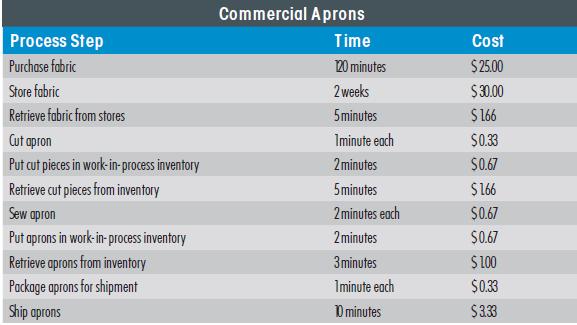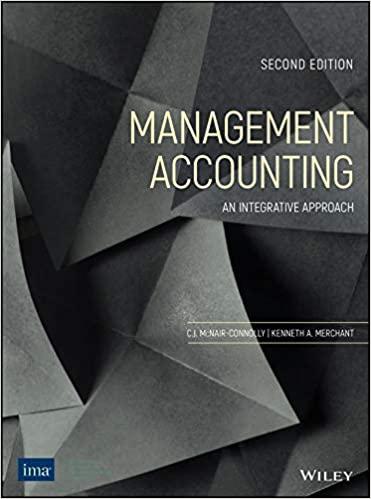Betsy Homemaker makes and distributes a line of aprons for both commercial and residential use. The standard
Question:
Betsy Homemaker makes and distributes a line of aprons for both commercial and residential use. The standard products consist of white full-length aprons used for restaurants and multipatterned bib aprons for home use. Sadie Burns, the owner of the company, is trying to see which product line offers the best opportunity for profitable growth in the future. The plain white standard commercial apron sells for $4.50, while the patterned bib apron for home use sells for $7.50. The commercial aprons are sold to linen supply companies that handle the needs of restaurants, while home use aprons are distributed through a variety of kitchen stores and retail outlets. The process flow for making a batch of 50 units of the two products, along with the relative costs per step, is presented in the tables below. The company only has six employees who do all of the work noted in these steps. Each worker could theoretically complete one apron (cut and sew) every four minutes at a cost of $20 per hour if they did not have to do other work.
The materials for the commercial apron cost $1, while those for the residential market cost $2. Marketing for the commercial apron is $25,000 per year. The company sells 100,000 commercial aprons per year. Marketing and distribution for the residential aprons is $50,000 per year. The company sells 50,000 units per year into this market. If Betsy Homemaker could find a way to produce more commercial aprons, it could sell them as it has a very good reputation in the marketplace. The residential market does not hold as much promise, so if Sadie wants to expand her business, it has to come in the commercial lines.
REQUIRED:
a. Calculate the total elapsed time for making an apron.
b. What is the value-added time in this process? State it both in terms of hours and a percentage of total time.
c. What is the total production cost of the two products?
d. Including marketing, what is the total cost for the two lines for a year?
e. What is the total profit per line per year? Unit profit per product?
f. Which product is the most profitable?
g. If Sadie wants to expand output, what activities does she need to focus on to free up time for production?
h. Should Sadie consider having her workforce specialize; that is, to do specific tasks to maximize output? Why or why not? Use a business case structure to make your points.
Step by Step Answer:

Managerial Accounting An Integrative Approach
ISBN: 9780999500491
2nd Edition
Authors: C J Mcnair Connoly, Kenneth Merchant





